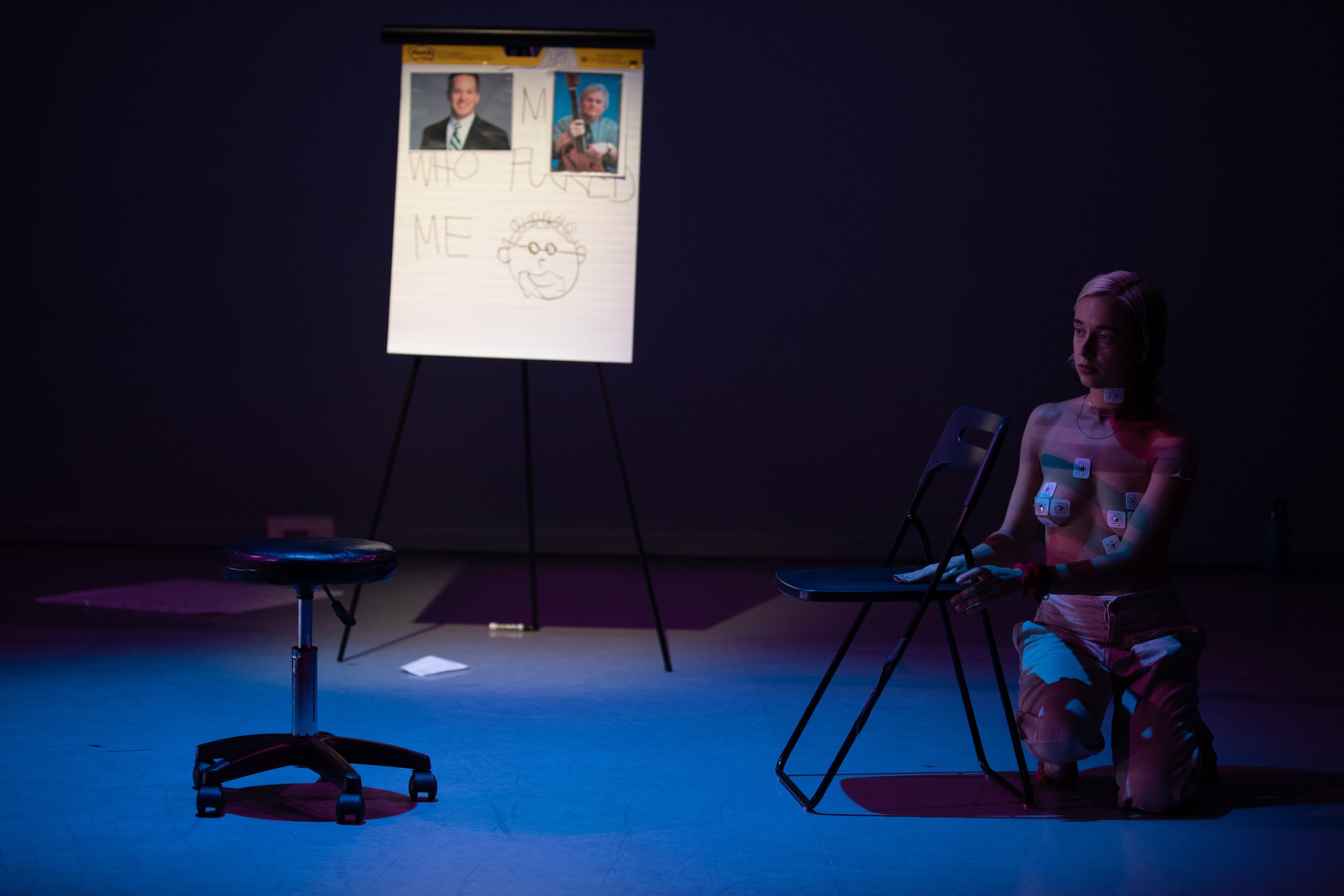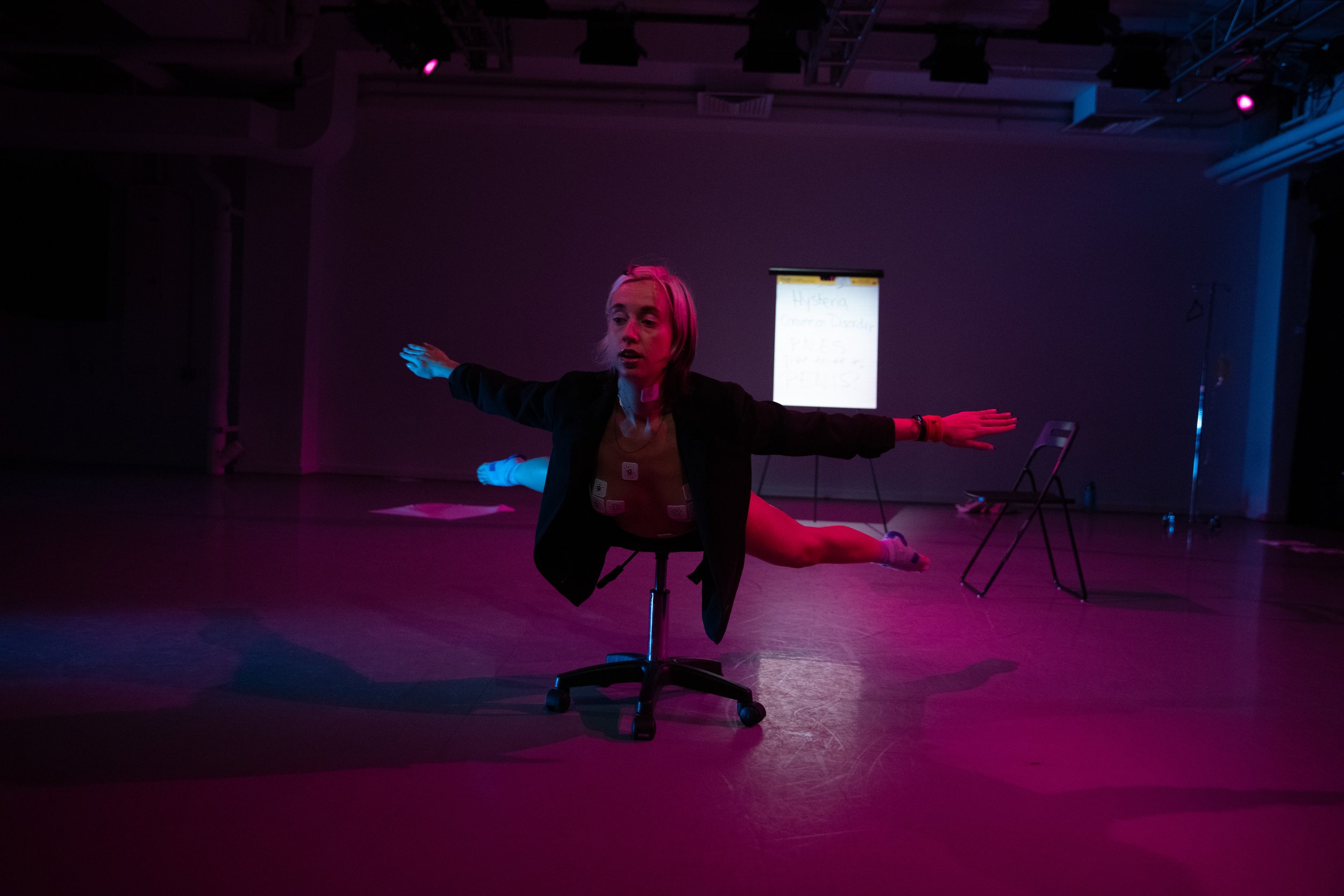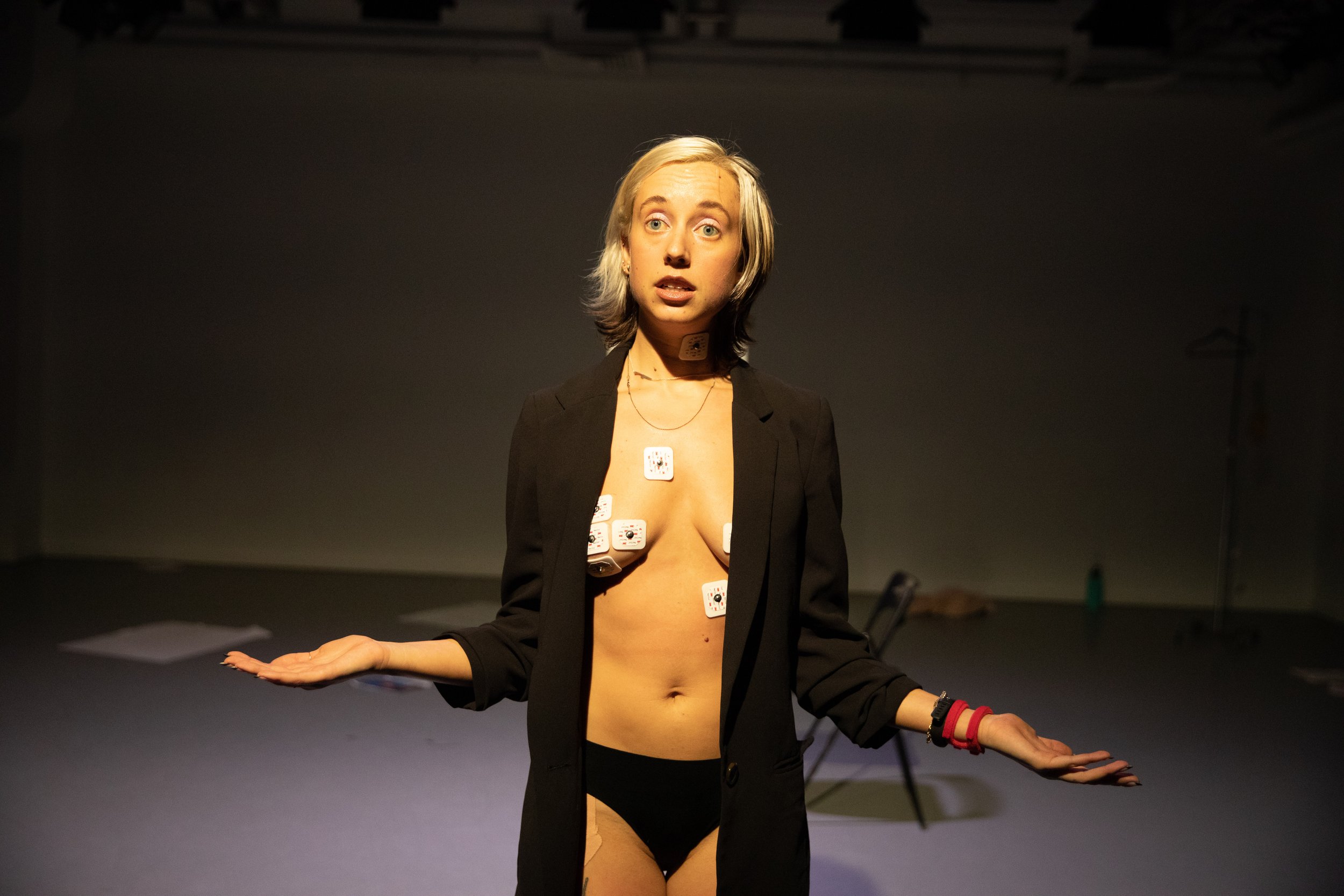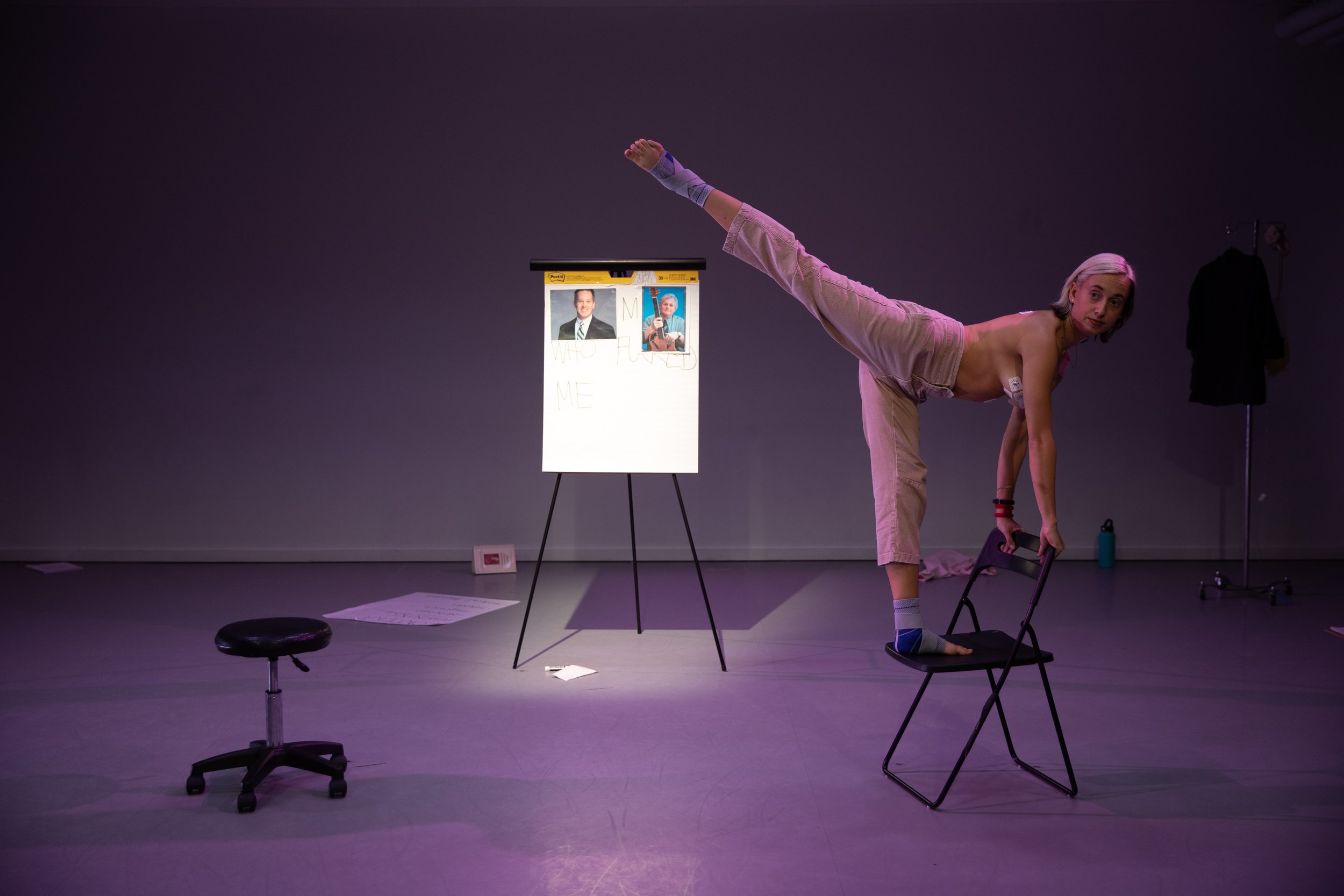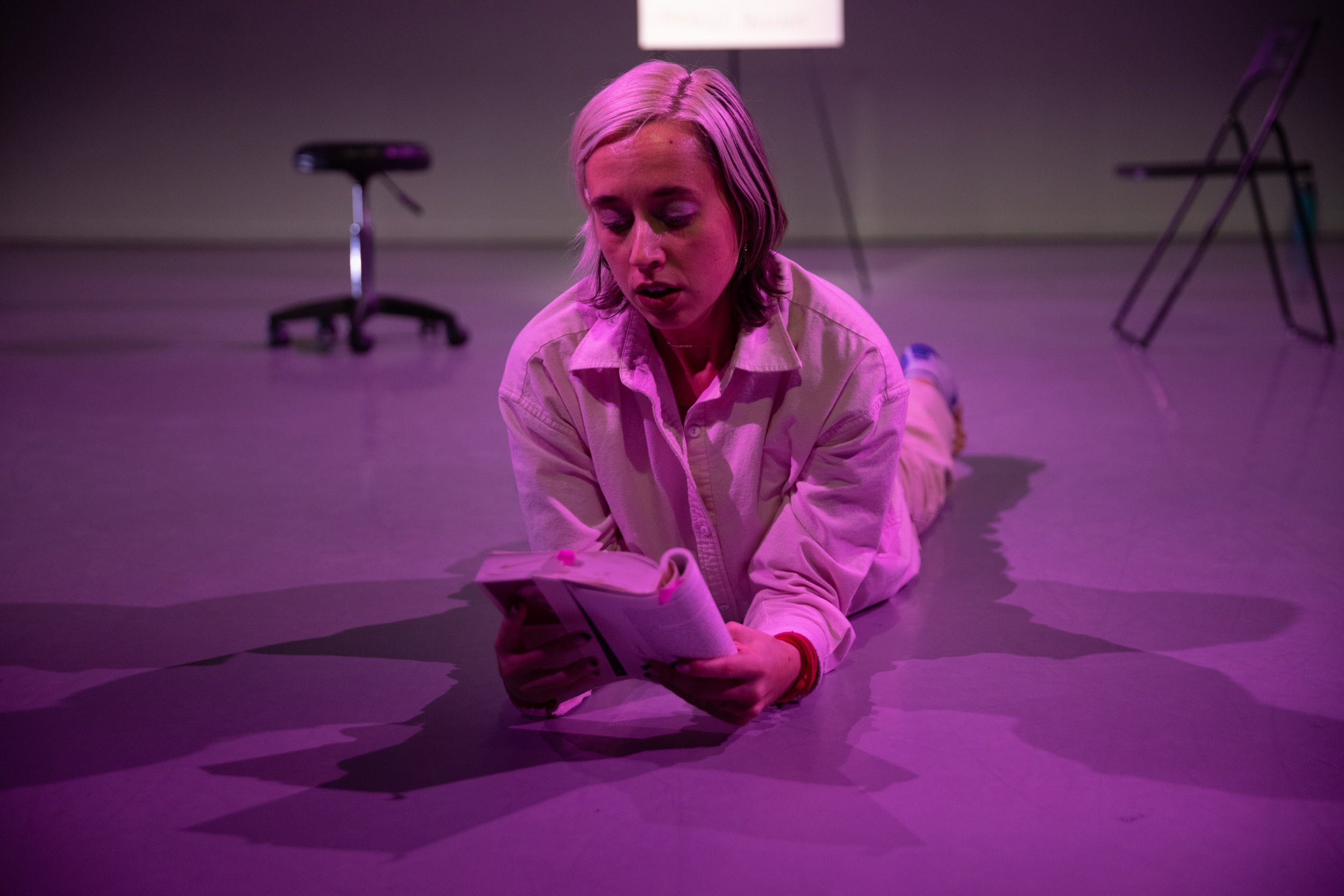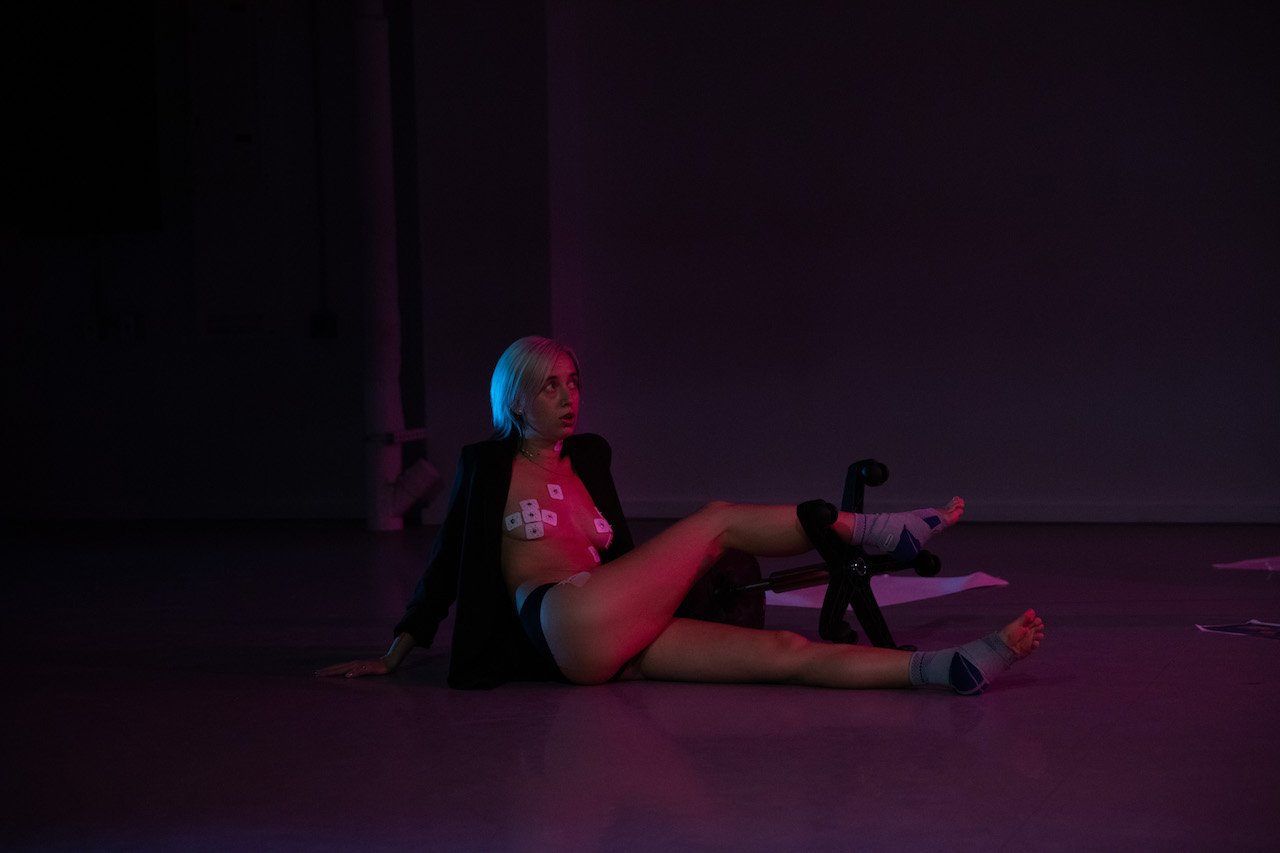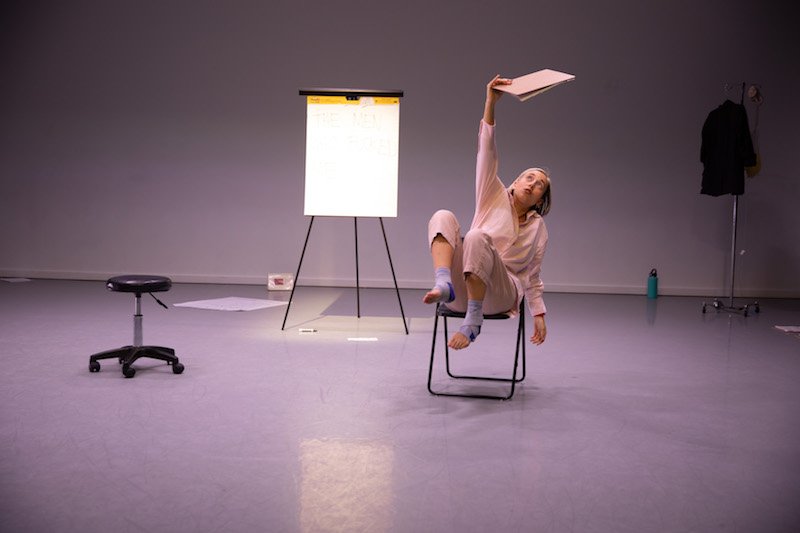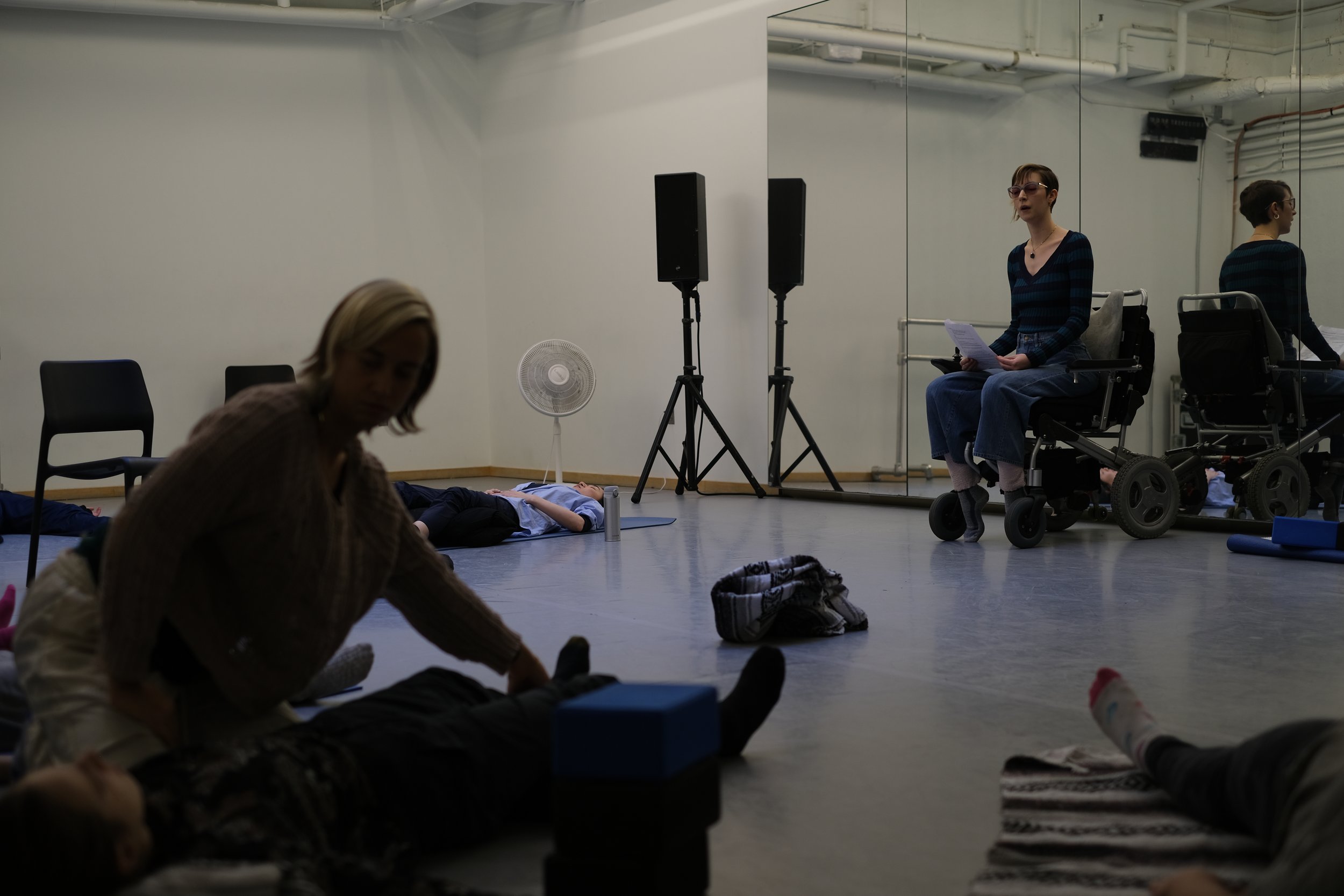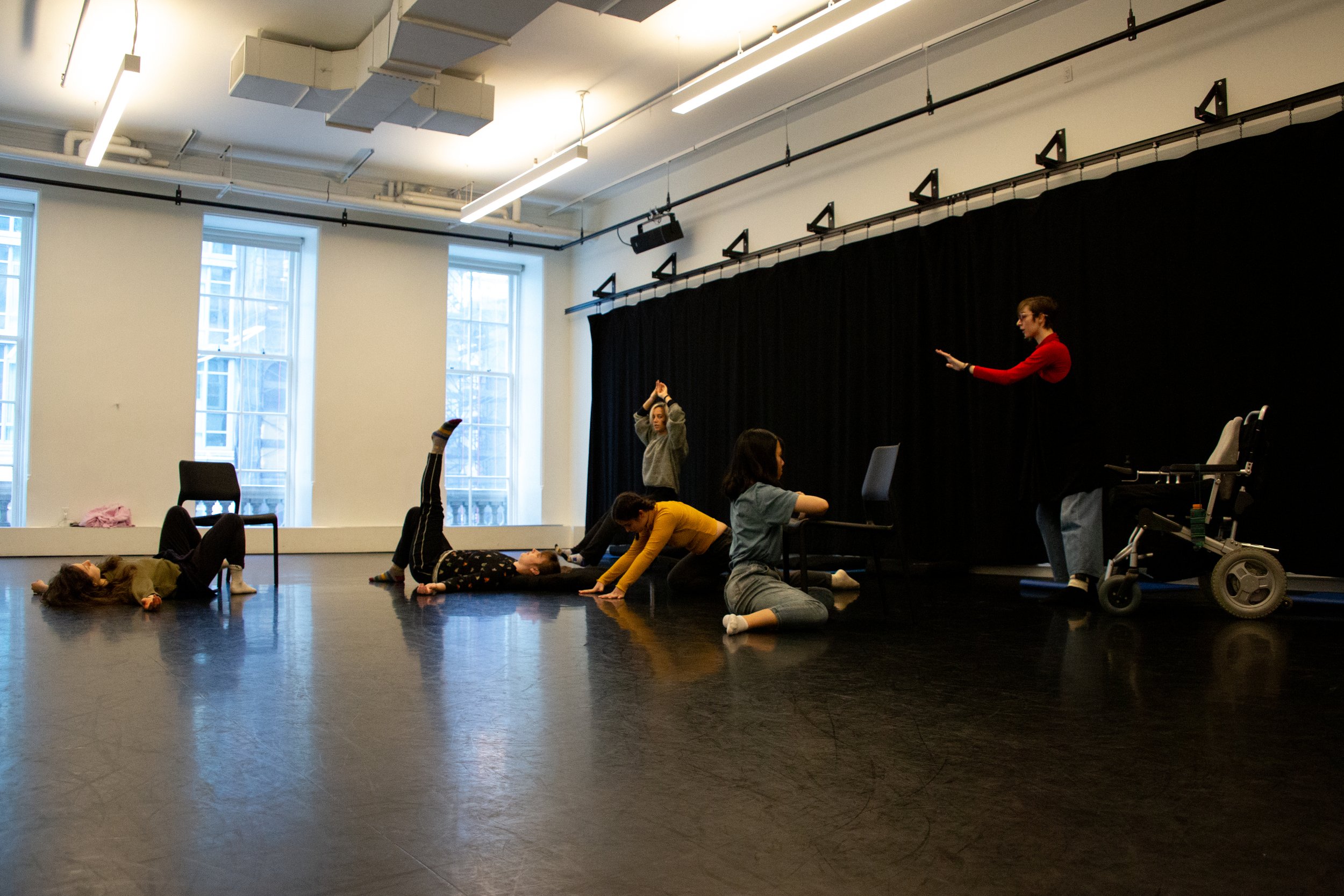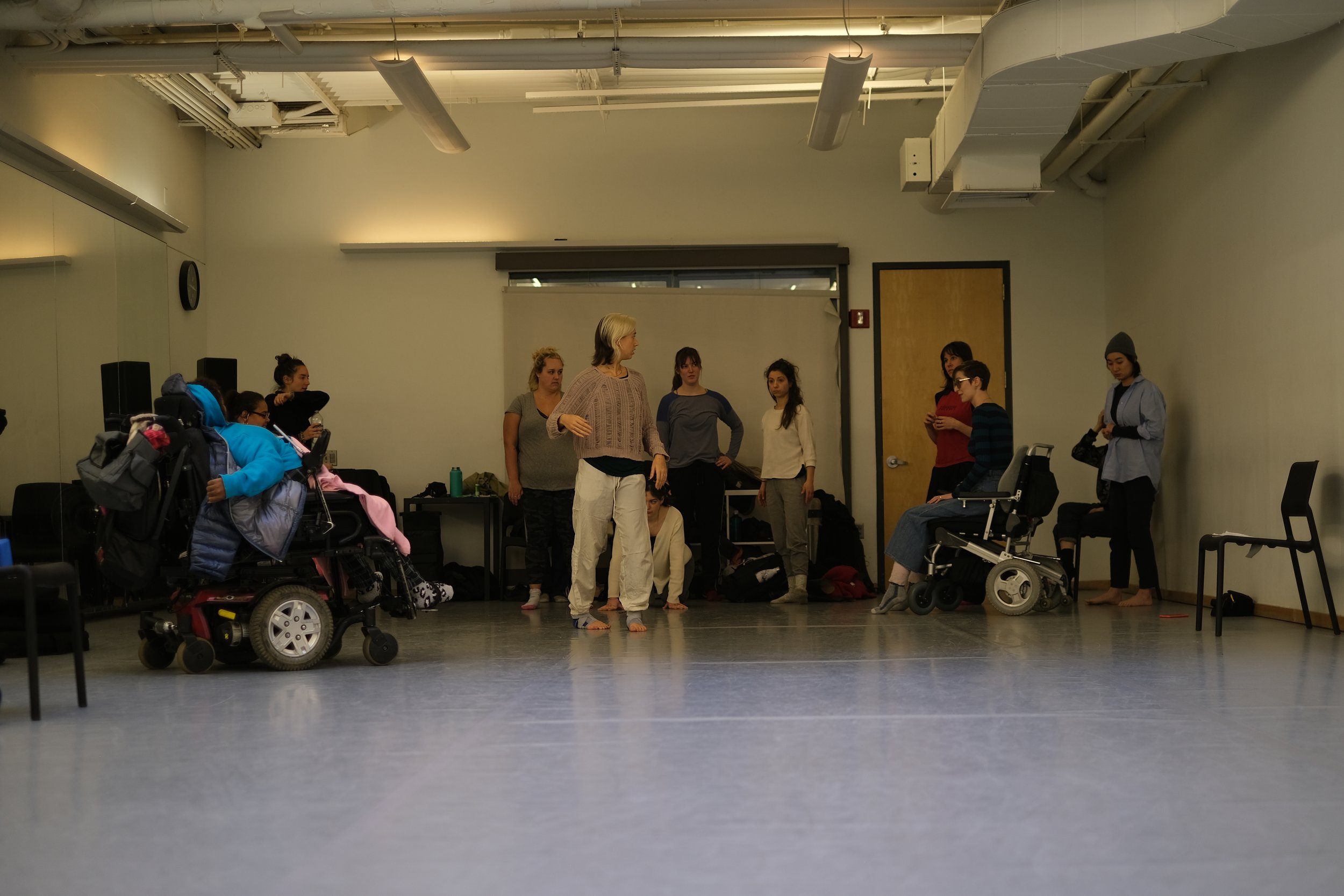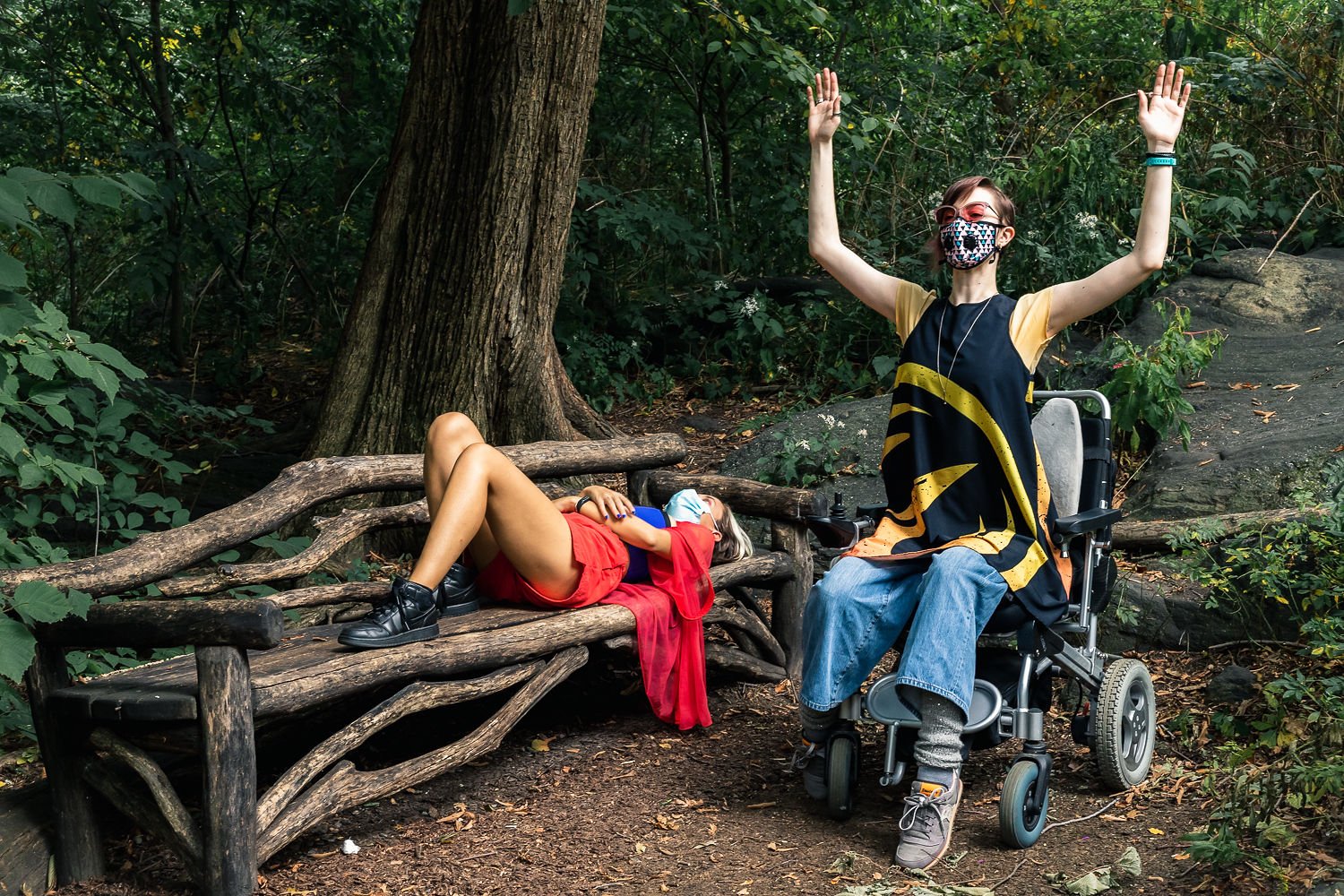Dance
I move and make to process and understand value systems. I want to deconstruct the internalized fetishization of my hypermobility and physicality of ‘limitlessness’. I work with movement, voice, sound, objects, characters, publications, and histories. I explore ableism and eugenics to illuminate the interconnectedness of the arts to the exploitation and medicalization of disability.
Residencies
2021-2022 Acitivist in Residence with New Yorkers for Culture and Arts
2020 Dance/NYC Dance. Disability. Social Justice. Fellow
2019-2020 Gibney Dance Work-Up artist
Hyp-ACCESS is a 2020-2021 Gibney Moving Toward Justice Fellow supported by the Bay and Paul Foundation and the Mertz-Gilmore Foundation.
Teaching
Dancing Queerly
Gibney Dance
CalArts
College of the Atlantic
Bennington College
Healing is cure is elimination
Healing is cure is elimination is a performance piece illuminating how popular dance aesthetics are born from ableist exploitation and fetishization of Hypermobile disability - linking the development of the liberal eugenic state to western fetishizations of joint flexibility. I deconstruct internalizations of “limitlessness” perpetuated by ideas of wellness/health in the performing arts, medicine, and somatics. Through movement, sound, conversation recordings, medical records, publications, and histories I explore this specific manifestation of the neo eugenics movement.
A photo of Audre from the side. Audre, an olive toned white person in a yellow bathing suit and lab goggles sits on a stool in the middle of the street. She reads into a microphone. Her blonde hair is pulled up, she holds a printed article, a towel is draped over her shoulders. Behind her are walls of blurred graffiti, fencing, a table tipped on its side, and patches of greenery. An orange cooler full of medications is in the bottom left corner.
A slideshow of images from a performance of DX ME FIX ME and one marketing image. The marketing image is a photo of Audre holding her IV pole while getting an infusion. She is wearing EKG electrodes as pasties, jeans, and a blazer in front of a turquoise wall. Other images include Audre standing on a chair with her leg up behind her, Audre reading from a book while lying on her stomach, Audre writing “Hysteria, conversion disorder, P.N.E.S., penis?” on an easel in her underwear, Audre reading from a clipboard, balancing while seated, Audre rolling around with her legs tangled in a stool, Audre speaking up close, her mouth midway open, Audre spinning in a starfish pose with her pelvis on the rolling stool. Throughout the images, stage lighting changes from white and harsh, to soft and pink, to dark and blue, and to bright and yellow.
DX ME FIX ME
DX ME FIX ME is a dance performance about illness and disability shaped by eugenic legacies in somatics, dance, medicine, and science. It is about seeking care in an attempt to manage illness, medicalization of the femme body, and the relationship of those actions to the male gaze and institutionalized knowledge.
Duration: 32 minutes.
For a captioned recording, email: hypermobileaccess@gmail.com
Pedagogies
-
Hyp-Improv is a harm-reducing improvisational movement practice supporting artistic choice while addressing internalized ableism through concepts of care. For hypermobile, disabled, & neurodivergent people who are diagnosed, self-diagnosed, or questioning. Non-disabled artists are welcome to attend.
-
Hypermobile Accessible Proprioceptive Therapy (HAPT) accessible somatic touch-based therapy developed for Hypermobile disability.
*note: HAPT was previously called Awareness Based Neuromuscular Re-patterning. The name has been changed because the name ABNR was vague and not grounded in the principles of our practice.
A slideshow of photos. Image 1: a picture of Audre and L in a classroom filled with hypermobile and other disabled people. Image 2: An image of Audre and L dancing. Audre lies on a bench in red, L poses in their wheelchair with their arms above their head. They are in a green forest surrounded by trees and plants. Image 3: In the foreground, Audre works with a student on the floor in a blurred and dark-lit corner. In the background, L is well let, seated in their wheelchair, speaking to a class of people. Image 4: A still of 6 dancers in a studio. People dance on the ground, in and below chairs, with mobility aids, and while standing. Dancers are at different levels, in different colored clothes, and face varying directions in the room.

